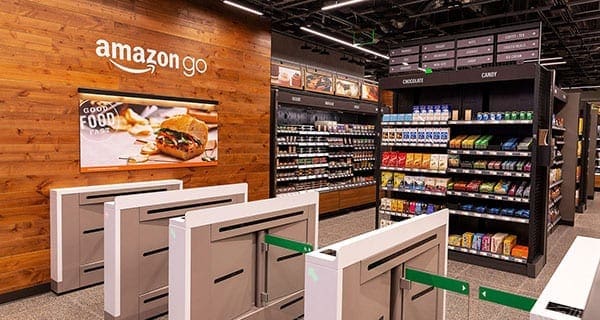 Grocers have always had a love-hate relationship with technology, which may explain why most of our self-checkout experiences are poor. But change is on the way.
Grocers have always had a love-hate relationship with technology, which may explain why most of our self-checkout experiences are poor. But change is on the way.
Some Canadians detest going to the grocery store. It’s repetitive, tiring and can be quite unpleasant, especially when the store is busy. Picking up groceries and lugging them home is work, something most would rather avoid.
On the other hand, many of us enjoy visiting food stores to discover new products or flavours.
But most Canadians would agree on one thing: waiting in line to pay for your items, no matter how patient you are, is the most frustrating part of grocery shopping.
For decades, the most mismanaged part of the grocery experience has been leaving the store. As you enter, many stores have greeters, sometimes even the owners, who go out of their way to make sure you feel welcome. There are usually staff available, somewhere, when you need help finding what you’re looking for. But leaving the store, and specifically going through the checkout, is often a nightmare.
To avoid waiting to pay for their items, and being forced to take in the news of the latest Elvis sighting in the National Enquirer, Canadians will opt for the often-dysfunctional self-checkout machines.
Poorly designed self-checkout lanes have been a source of frustration since the technology first appeared in Canadian stores in 2000. Something always goes wrong, which then requires an employee to come to the rescue. The experience is often embarrassing and annoying.
But despite all the flaws, Canadians still use self-checkouts. According to a recent survey by Dalhousie University, a full 66 per cent of us have used self-checkout lanes and 11 per cent use them consistently.
Most grocers feel that technology gets in the way of connecting with customers in the store, and that the only way to build customer loyalty and increase foot traffic is to interact with visitors as much possible.
Many observers have wondered whether the poor quality of self-checkout machines was by design, to force customers to interact with staff.
Grocers also feared losing sales by going virtual. But the time pressures of the modern lifestyle and the constant quest for convenience have forced grocers to think differently about how they manage the grocery experience. And they’ve been compelled to seek different channels to reach more customers, such as online delivery and meal kits.
Encouraging impulse buying is an art that grocers have mastered in the brick-and-mortar environment. While you wait in line to pay for items, you’re surrounded by candies, gum, magazines and other small temptations. These bring much-needed additional revenues to retailers who are desperate to increase their razor-thin profit margins. However, getting customers to buy on impulse in front of a screen is another story.
But grocers recognize what’s coming.
According to the same Dalhousie University survey, nearly two per cent of Canadians buy food online regularly and more than 34 per cent are thinking about doing so. This is an astonishingly high number compared to just a few years ago. This means Canadians are being drawn to solutions that can save them time and help them avoid the hassle of grocery shopping. For example, more than 14 per cent of Canadians have ordered ready-to-cook products from meal kit providers, and that number is is likely to increase.
External disruptors like Amazon want to remind Canadians that technology can serve a purpose in the grocery business and make any visit more civilized. At Amazon Go, you don’t need to interact with anyone. You essentially get your groceries and walk away without paying. Sensors detect what you picked up and the amount is automatically deducted from your bank account. No waiting, no browsing through tabloids, no buying checkout rack incidentals.
So non-traditional grocers are demonstrating that better technological solutions can enhance our shopping experience.
The industry is going through a significant transition in terms of enhanced technology, in-store and online.
At the same time, Canadians – and not just the younger generations – want more convenience. That means anyone who doesn’t want grocery shopping to be a slog.
Grocers know that consumers expect seamless solutions that will make shopping pleasant. But grocers also recognize that no one wants to pay more for better technology, or delivery for that matter.
So patience is a virtue – grocers will get there but it may take a while. If you opt for the self-checkout aisle, expect the dreaded “wait for an assistant” message to pop up on the screen for a while longer.
Dr. Sylvain Charlebois is senior director of the agri-food analytics lab and a professor in food distribution and policy at Dalhousie University.
Sylvain is a Troy Media Thought Leader. Why aren’t you?
For interview requests, click here. You must be a Troy Media Marketplace media subscriber to access our Sourcebook.
The views, opinions and positions expressed by columnists and contributors are the author’s alone. They do not inherently or expressly reflect the views, opinions and/or positions of our publication.

